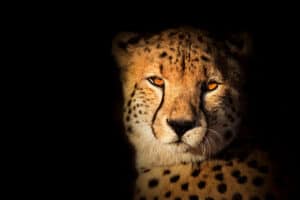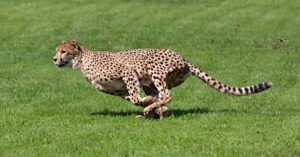Baby cheetah cubs are speedy big cats that have many interesting things about them. Did you know that you can use a cheetah’s spots to distinguish it from others? What about that cheetah cubs can’t roar? To learn all about these facts and a few others, keep reading! Let’s dive right in!
#1: A Baby Cheetah is Called a Cub!
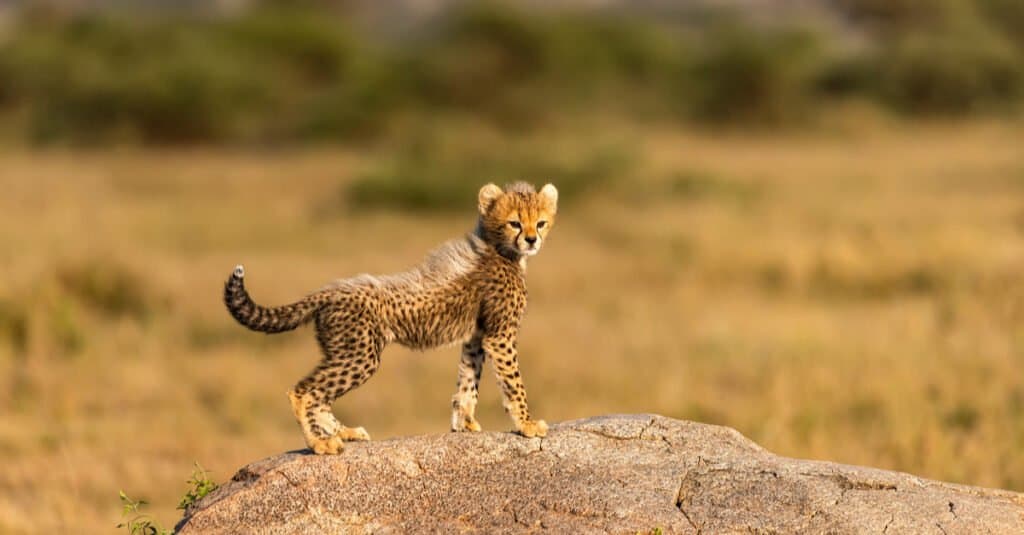
Cheetah babies are called cubs!
©Danita Delimont/Shutterstock.com
Baby cheetahs are among the most adorable cats in the animal kingdom. And in spite of their densely spotted coats, a tuft of lighter colored fur that runs along their spine, and a short muzzle, they are very much the image of what they will look like when fully grown.
Like other majestic felines such as lions and tigers, a newborn cheetah is called a cub. Other animals like bears, raccoons, and badgers also share the same name. Even though cheetahs are solitary animals, cheetah cubs stick by their mother’s side until they can fend for themselves.
#2: Each Baby Cheetah Has Unique Spots

No two cheetah cubs have identical spots.
©Stu Porter/Shutterstock.com
Perhaps one of the baby cheetah’s most prominent features is its spotted coat. Scientists say that the average baby cheetah has about 2,500 spots. They also say that these spots are unique to the animal and can even be used to identify cheetahs, like a name!
Each cheetah cub also has a strip of black fur under its eye called a tear streak or malar stripe. These markings are also unique to each baby cat and run from its tear duct to the mouth. These markings coupled with the cub’s unique spots aid in camouflaging from predators.
Did you know that cheetah cubs are born with all the spots they’ll ever have? Researchers say that the spotted coat of a young cheetah cub is identical to the one they’ll have as adults. The only difference? The spots on a cheetah cub are much smaller and closer together than an adult. As the baby grows up, the spots get larger and more spread apart.
#3: Cheetah Cubs Can’t Roar
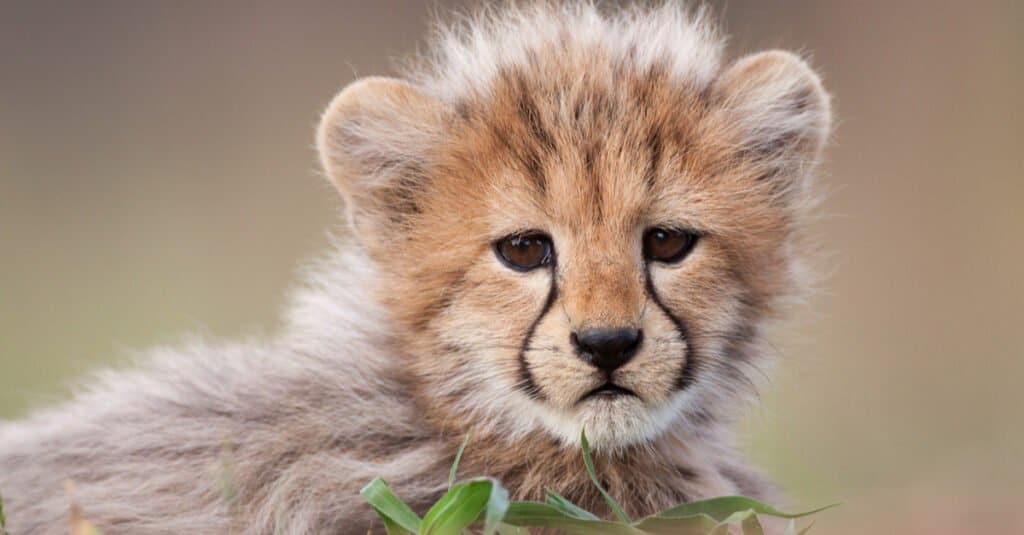
Cheetah cubs nor their parents have the anatomy needed to roar.
©Stu Porter/Shutterstock.com
There’s no doubt that a roar is associated with big cats. After all, lions and tigers are famous for their roars. When it comes to cheetahs, however, the ability to roar is absent. Baby cheetah cubs and their parents both cannot vocalize this way.
To understand why the ability to roar is absent for cheetah cubs, you must first understand what makes them possible. Roaring is an anatomical ability, which means that animals who can roar use their larynx and hyoid bone to create noise. These animals usually have modifications to these body parts, coupled with larger internal air spaces where the noise can live.
Cheetah cubs can’t roar for two anatomical reasons. First, their hyoid bone has only one piece. Big cats who can roar have a two-piece hyoid bone. Second, their larynx has a sharp-edged vocal fold that prevents them from being able to create the roaring sound from within.
#4: Newborn Cheetah Cubs Are Born with Thick Fur
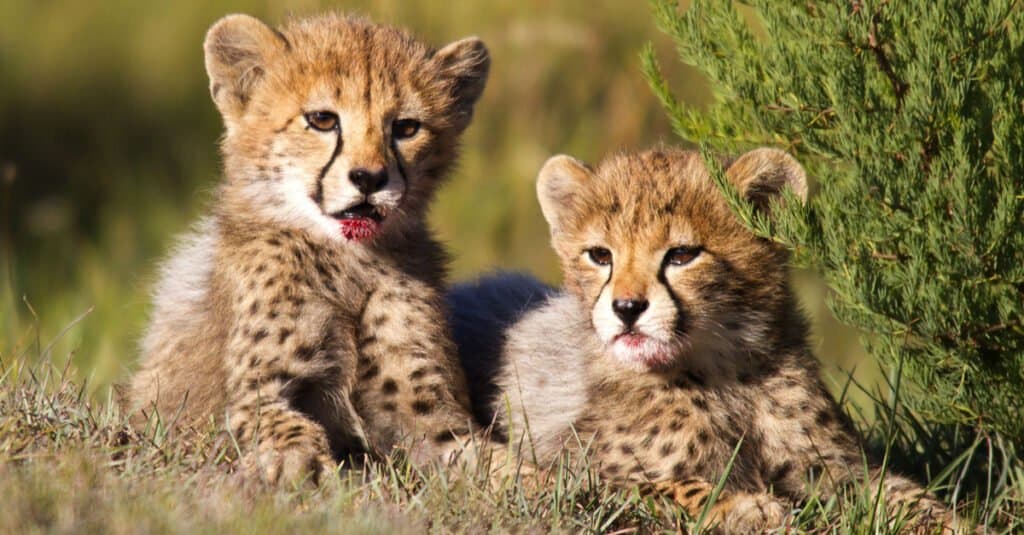
Cheetah cubs are born with a mantle that makes them look like
honey badgers
!
©Francois van Heerden/Shutterstock.com
While many baby animals are born completely bald, the same is not true for the baby cheetah. These adorable big cats are born with a stripe of fur called a mantle that goes down their backs. This layer of fur covers their entire body and makes the babies look like honey badgers.
It’s no secret that baby cheetah cubs are vulnerable to predators. After all, they’re tiny, weak, and completely dependent on their mothers for survival. For the first three months of their lives, they survive off milk and don’t start hunting on their own until much later. The honey badger, on the other hand, has few predators. Consequently, a cheetah cub’s mantle gives them the best chance at survival.
Researchers say that this stripe of fur helps keep baby cheetah cubs safe from hyenas, lions, and tigers. By the time the babies are around three months old, they will lose their mantle entirely.
#5: Cheetah Cubs Have a High Mortality Rate
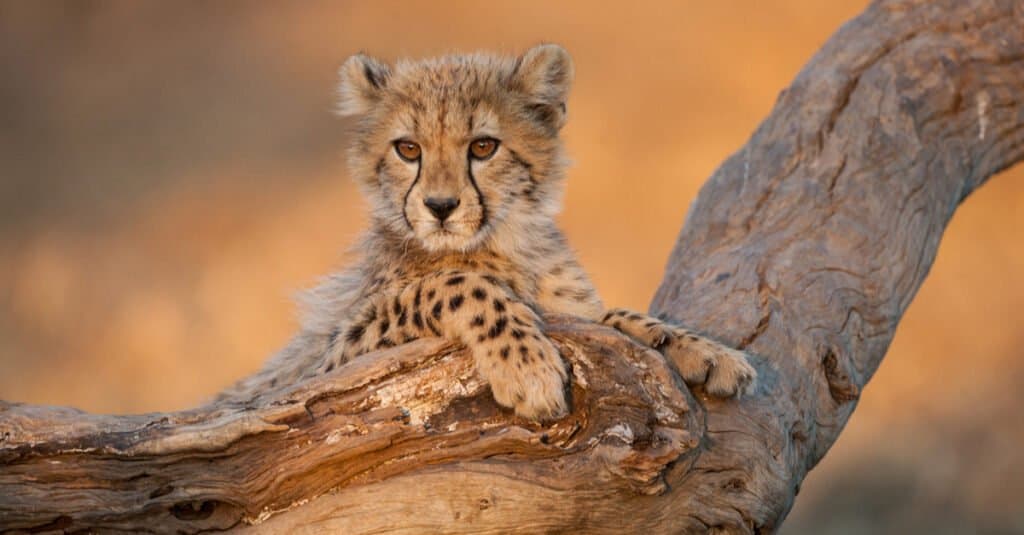
Cheetah cubs are especially vulnerable to predators since their mothers leave them to hunt.
©Stu Porter/Shutterstock.com
Baby cheetah cubs are especially vulnerable to predators during the first three months of their lives. During this time, the tiny cats are still completely dependent on their mother’s milk for survival. Additionally, male cheetahs play no role in raising cheetah young. This means that cubs must be left alone while females hunt.
Researchers say that the mortality rate for cheetah cubs is as high as 75% in the first three months of life. The mother’s absence, while she hunts, is likely the most prominent contributing factor. Human conflict, habitat loss, and hunting are a few more examples.
Even though cheetahs are endangered in the wild, mostly due to the high mortality rate of babies, conservation efforts are in action. The mortality rate of cheetah cubs under human care is around 20%, which means that careful care can preserve the species. Captive cheetah breeding programs are partially responsible for saving these amazing big cats from extinction.
The photo featured at the top of this post is © Stu Porter/Shutterstock.com
FAQs (Frequently Asked Questions)
What is a baby cheetah called?
Like baby lions, tigers, and bears, baby cheetahs are also called cubs!
How much do baby cheetahs weigh?
Newborn baby cheetahs weigh around 250 grams at birth.
What do baby cheetahs eat?
For the first three months of their lives, baby cheetahs survive only on their mother’s milk. However, cheetah cubs may have their first taste of meat at around three weeks old. Cheetah cubs usually start learning how to hunt by observing their mother at around six weeks old and on.
Where do baby cheetahs live?
Baby cheetahs mostly live in Central Iran and Africa.
Thank you for reading! Have some feedback for us? Contact the AZ Animals editorial team.





